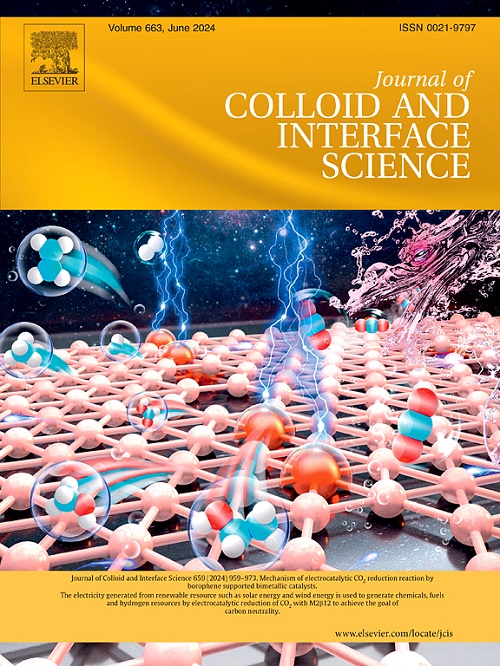使用润湿和超声波从油/水混合物中提取油
IF 9.7
1区 化学
Q1 CHEMISTRY, PHYSICAL
引用次数: 0
摘要
由于不同的表面润湿特性,放置在固体表面上的油和水对在固体中传播的mhz级表面声波(SAW)的响应不同。我们观察到,在声呐激发下,油膜,无论是非有机硅油还是有机葵花籽油,都是从由水和表面活性剂组成的乳液组成的无底滴中连续提取出来的。从混合物中提取油的机制是声润湿现象:低表面张力的油相使混合物以“手指”的形式,远离液滴,与SAW的路径相反。高表面张力的水相保持静止。增加SAW强度或混合物中的含油量都能提高油离开乳化液的速度。我们进一步观察了声呐-毛细流在油膜自由表面的不稳定性,以及声呐-毛细流在乳化液油浓度中形成的空间梯度。我们的研究表明,利用声SAW从油水混合物中非均相去除油的潜力,可以补充现有的相分离方法。本文章由计算机程序翻译,如有差异,请以英文原文为准。

Using wetting and ultrasonic waves to extract oil from oil/water mixtures
Oil and water placed atop of a solid surface respond differently to a MHz-level surface acoustic wave (SAW) propagating in the solid due to their different surface wetting properties. We observe that, under SAW excitation, oil films, whether non-organic silicon oil or organic sunflower oil, are extracted continuously from sessile drops, comprising emulsions of the oil in question in a solution of water and surfactants. The mechanism responsible for the extraction of oil from the mixtures is the acoustowetting phenomenon: the low surface tension oil phase leaves the mixture in the form of ‘fingers’ that, away from the drop, spread opposite the path of the SAW. The high surface tension water phase remains at rest. Increasing either the SAW intensity or the oil content in the mixture enhances the rate at which oil leaves the emulsion. We further observe acoustic-capillary flow instabilities at the free surface of the oil film and the formation of spatial gradients in the emulsion oil-concentrations in the presence of SAW. Our study suggests the potential for using SAW for heterogeneous removal of oil from oil-in-water mixtures to complement current phase separation methods.
求助全文
通过发布文献求助,成功后即可免费获取论文全文。
去求助
来源期刊
CiteScore
16.10
自引率
7.10%
发文量
2568
审稿时长
2 months
期刊介绍:
The Journal of Colloid and Interface Science publishes original research findings on the fundamental principles of colloid and interface science, as well as innovative applications in various fields. The criteria for publication include impact, quality, novelty, and originality.
Emphasis:
The journal emphasizes fundamental scientific innovation within the following categories:
A.Colloidal Materials and Nanomaterials
B.Soft Colloidal and Self-Assembly Systems
C.Adsorption, Catalysis, and Electrochemistry
D.Interfacial Processes, Capillarity, and Wetting
E.Biomaterials and Nanomedicine
F.Energy Conversion and Storage, and Environmental Technologies

 求助内容:
求助内容: 应助结果提醒方式:
应助结果提醒方式:


